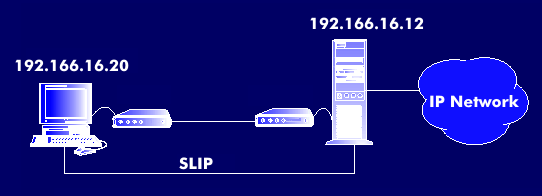serial line Internet protocol (SLIP)
The Serial Line Internet Protocol (SLIP) is the de facto standard for the transmission of TCP/ IP data packets over serial point-to-point connections. The SLIP protocol was developed in 1980, and Berkeley Unix version 4.2 was introduced in 1984. The protocol is now implemented in almost all devices, such as routers, hubs, terminal servers and all Unix variants.
The SLIP protocol supports data transmission over serial lines, with certain character sequences being transmitted before and after the transmission of IP frames. The relatively simple algorithm requires only two control characters, namely the END character and the ESC character. Each SLIP data packet starts with the ESC character (decimal 219), followed by the IP data, and ends with an END character (decimal 192). If the values for the code switch (ESC) and END occur in the IP data record, they are replaced there.
Since SLIP is not an official standard, there is no clearly defined maximum packet length. In Berkley-Unix a maximum packet length of 1,006 bytes is defined. No address information can be exchanged via SLIP; moreover, SLIP has no error correction, this is taken over by the IP protocol or the TCP protocol.
The Serial Line Internet Protocol (SLIP) is a protocol from the IETF, which is described in RFC 1055.

